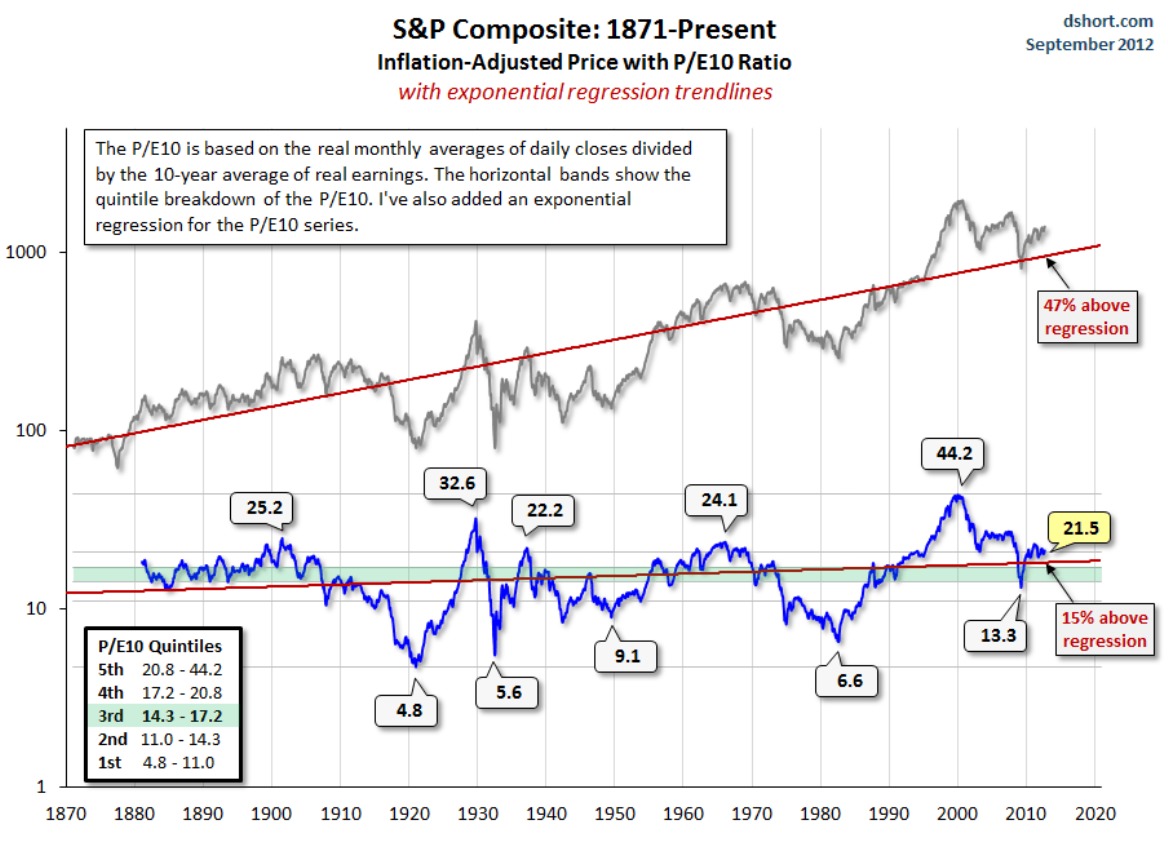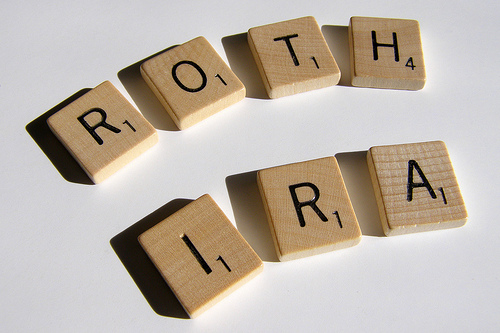by Michael Tarsala
Price-to-earnings ratios look historically cheap, but that measure may also be deceptive.
Case in point: The S&P 500 is trading at less than 17 times earnings, and around 14 times on a forward basis. That is still lower than it was during the vast majority of the time from 1991 to 2010, according to Crossing Wall Street editor Eddy Elfenbein.
If you’re investing for the long-term, though, one of the important valuation measures to watch is the 10-year PE, made popular by Yale economist Robert Shiller.
One of the problems with PEs is that they can be heavily influenced in the short-term by the E part of the equation — or short-term distortions in a company’s earnings. A sudden drop in E, and a company can look very expensive — even though the E drop may be only for a short period of time. Similarly, a very strong earnings period that is not necessarily sustainable can make a stock look cheap.
An arguably better goal for the long-term investor is to look at companies with a steady long-term earnings track record, then focus in on the times when the Ps, or prices, are historically weak or strong.
That’s what a 10-year PE lets you do. It takes the current price, divided by a 10-year stream of inflation-adjusted earnings. It allows you to then look at the periods when price is at a long-term discount, or the times when you want to be careful not to overload on stocks because they are at a long-term premium.
Right now, stocks are arguably on the expensive side. Today’s 10-year PE ratio, as calculated by Shiller is 21.4, higher than the long-term average of 16.5. Meanwhile, the current S&P 500 dividend yield is around 2%, less than half the historical average of 4.4%.
Doug Short at Advisor Perspectives recently put together a chart that puts those numbers in an even better long-term context:

Source: AdvisorPerspectives.com
It shows that the 10-year PE of the S&P 500 is above its long-term regression line. Not only that, it’s in the most expensive historical quintile right now.
What the chart is saying is that either prices need to come down or corporate earnings need to surge before long-term buyers will see historical returns on stocks.



